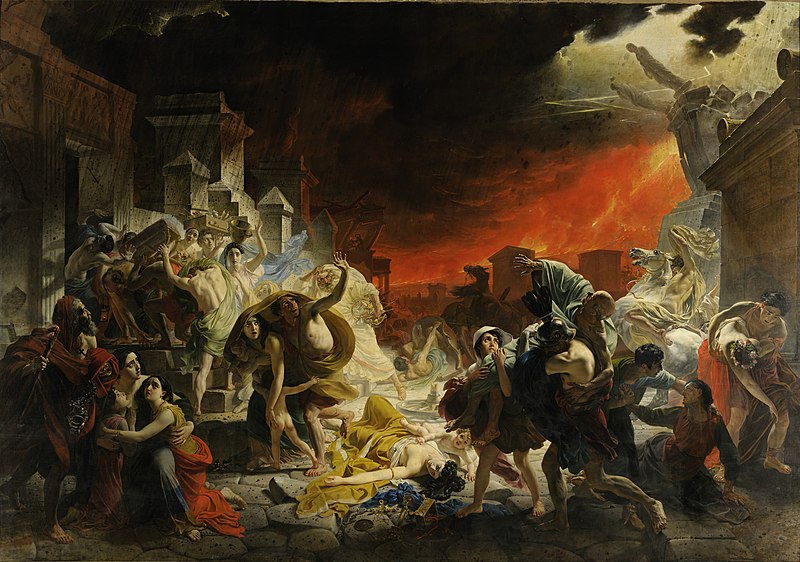
The painting depicts with documentary precision the course of the eruption of the volcano Vesuvius –the pillar of lava, and an earthquake. In addition, all the details of the painting are historically accurate – from the streets of the city and clothing, to the postures of the people: Briullov spent a lot of time in museums, trying to imagine how people behaved then (a lot of dead bodies were hidden from smoldering by ashes and got preserved to present days).
In addition, the painting reflects some symbolism – the collapse of the “old” world. This vision of the artist became a starting point for the creation of a number of future works.
But most of all, more than the play of light and shade and historical accuracy, the painting amazes with the figures of people. They are better viewed in groups, the same way they were created. This is how it was assumed in the academic traditions of the time.
On the left – a mother with two daughters. This is a portrait of the Countess Samoilova, long-term muse of the artist.
In the center – two sons are carrying their sick old father, and next to them a deceased mother and an infant, reaching for her.
On the right – Pliny the Younger with his mother (Pliny the Youngersurvived the eruption).
On the right – a young man, newlywed is desperately looking into the face of the girl in a wedding crown lying in his hands.
On the left – in the crowd Karl Briullov depicts himself as afleeing artist.
Dear friend! Next time also use #artzone and follow @artzone to get an upvote on your quality posts!
Downvoting a post can decrease pending rewards and make it less visible. Common reasons:
Submit
thank! I will try
Downvoting a post can decrease pending rewards and make it less visible. Common reasons:
Submit